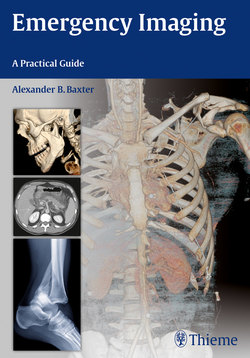Читать книгу Emergency Imaging - Alexander B. Baxter - Страница 75
На сайте Литреса книга снята с продажи.
Оглавление61
2Brain
Predisposing conditions include mastoid or petrous apex infection, polycythemia, malignancy, puerperium, dehydration, oral contraceptive use, head trauma, and inherited prothrombotic disorders such as protein S deficiency. In 20% of patients, no cause is identified.
The diagnosis is made by detecting a hy-perdense venous sinus on NCCT or demon-strating nonenhancing thrombus outlined by the enhancing dural sinuswalls on CT venography or postgadolinium MRI. The initial study for the patient with suspi-cious or atypical headache should be NCCT, which can identify a dense dural sinus and exclude competing diagnoses. Find-ings are often subtle, as the venous sinus can appear dense due to technical factors or hemoconcentration. Confirmation by CT venography, MRI, and or MR venogra-phy may be necessary. The most sensitive imaging strategy often involves a combina-tion of these studies (Fig. 2.25).
◆ Venous Sinus Thrombosis and Venous Infarct
Venous sinus thrombosis (VST) should be suspected in young and middle-aged adults who present with strokelike symp-toms, unusual headache, and visual distur-bance. Elevated intracranial pressure from impaired venous outflow typically leads to nausea, vomiting, and headache. Papillede-ma may or may not be present. The most frequent, but least specific, symptom is headache, often severe and persistent and usually gradually increasing over several days. Headache onset can be abrupt and can clinically mimic acute subarachnoid hemorrhage.
While arterial occlusion or emboli cause infarcts corresponding to well-described vascular territories, venous infarcts tend to involve the cortex or deep nuclei in a nonarterial distribution and are more commonly hemorrhagic. Their location and corresponding clinical findings de-pend on which dural sinus or cortical vein is occluded.
Fig. 2.25a–fa–d Venous sinus thrombosis with venous infarct. (a,b) ~ 3 cm right posterior temporal parenchymal hemorrhage with mild surrounding vasogenic edema and local sulcal eacement. Portions of the right transverse and sagittal venous sinuses are hyperdense. (c) The contents of the right transverse and sagit-tal sinuses are isointense to brain and outlined by enhancing dural sinus walls on this postgadolinium T1-weighted MRI. The left sigmoid sinus opacies normally. (d) FLAIR images show a right posterior temporal cortical/subcortical lesion with associated surrounding edema consistent with a venous infarct. Intermedi-ate signal in the right sagittal sinus.
e,f Partial sagittal sinus thrombosis. Very-high-attenuation material in the torcular herophili and sagit-tal sinus on nonenhanced CT. Sagittal CT venogram opacies the internal cerebral veins, vein of Galen, straight sinus, and most of the sagittal sinus. A lling defect in the occipital portion of the sagittal sinus corresponds to intrasinus clot on NCCT.
